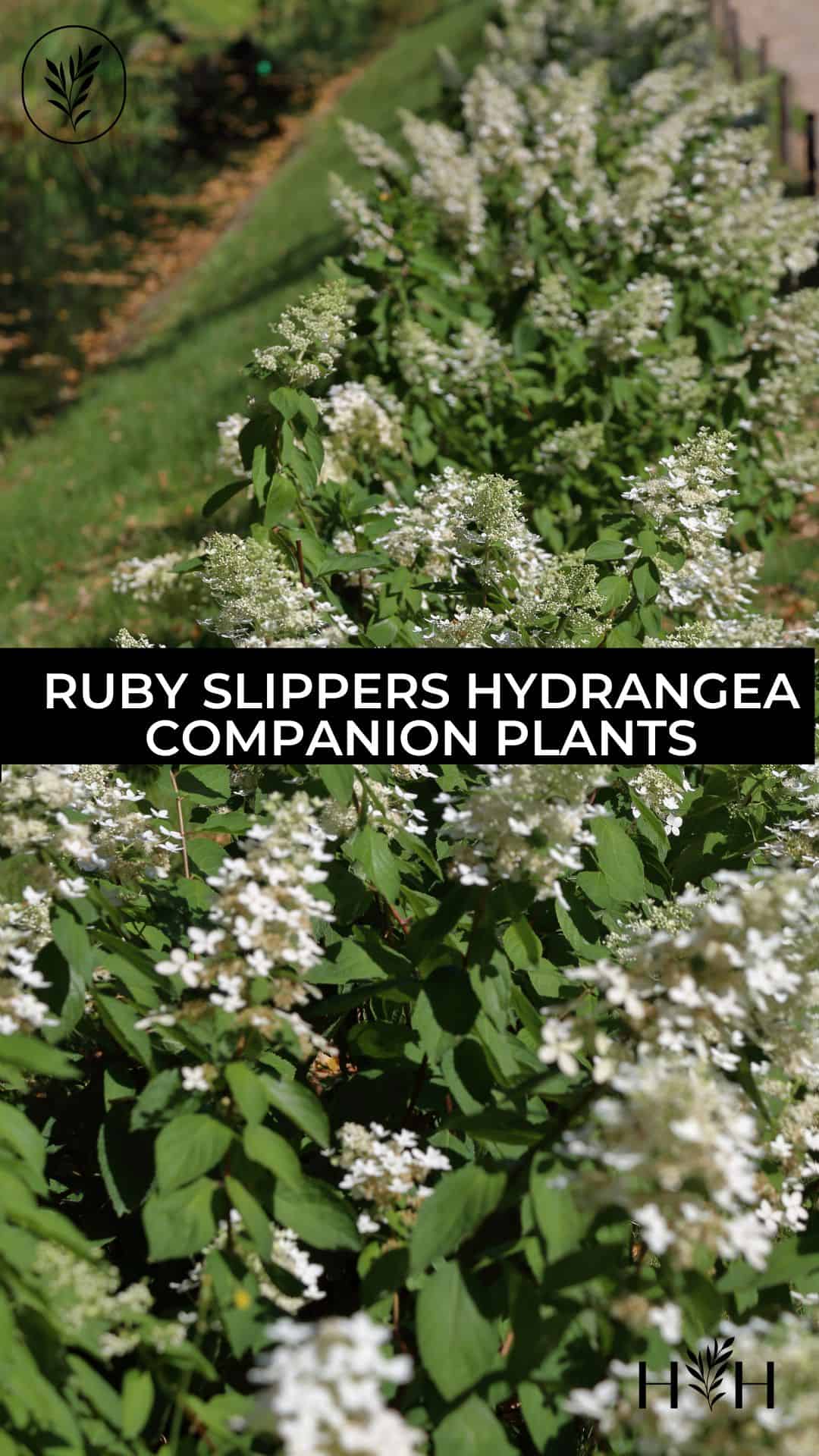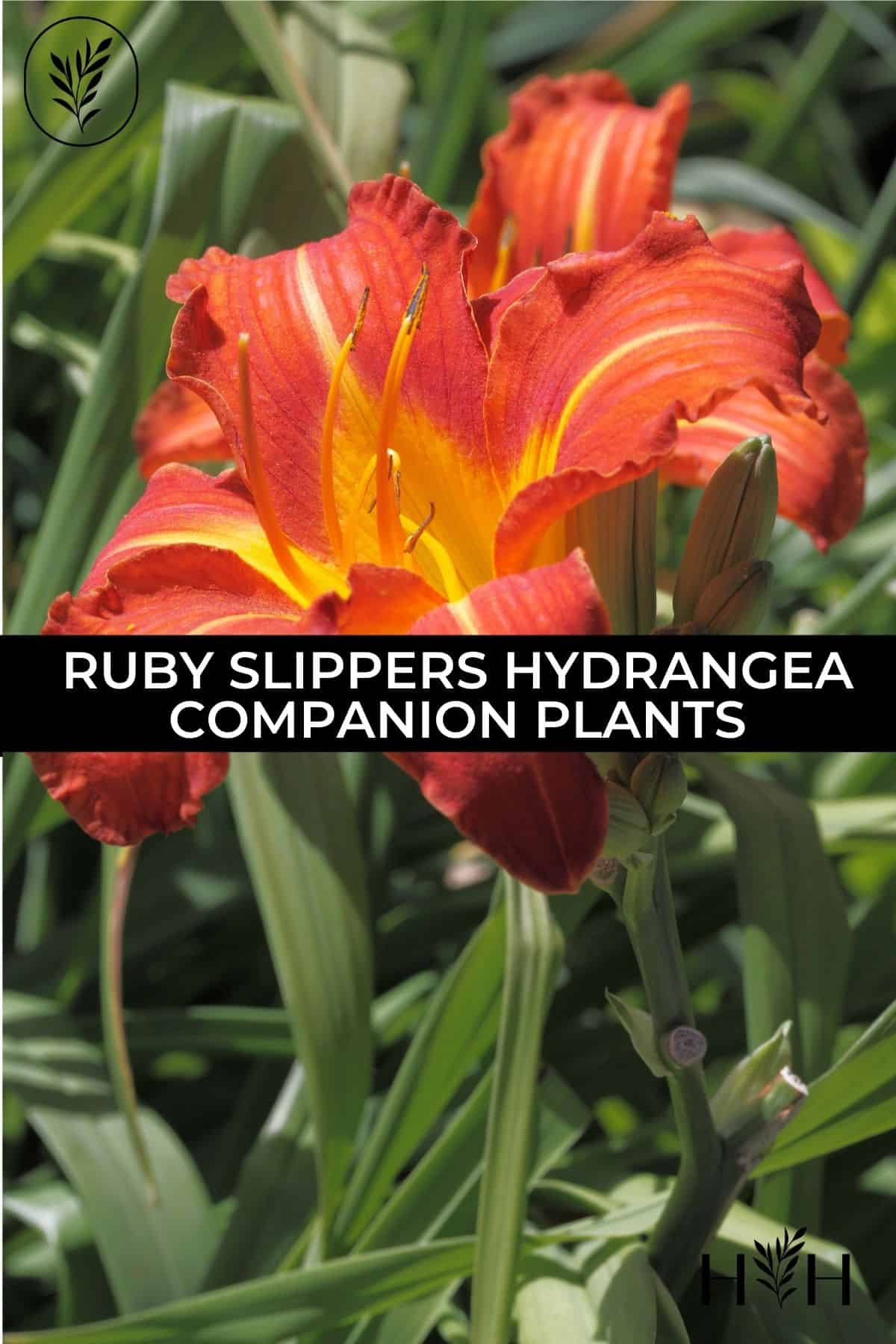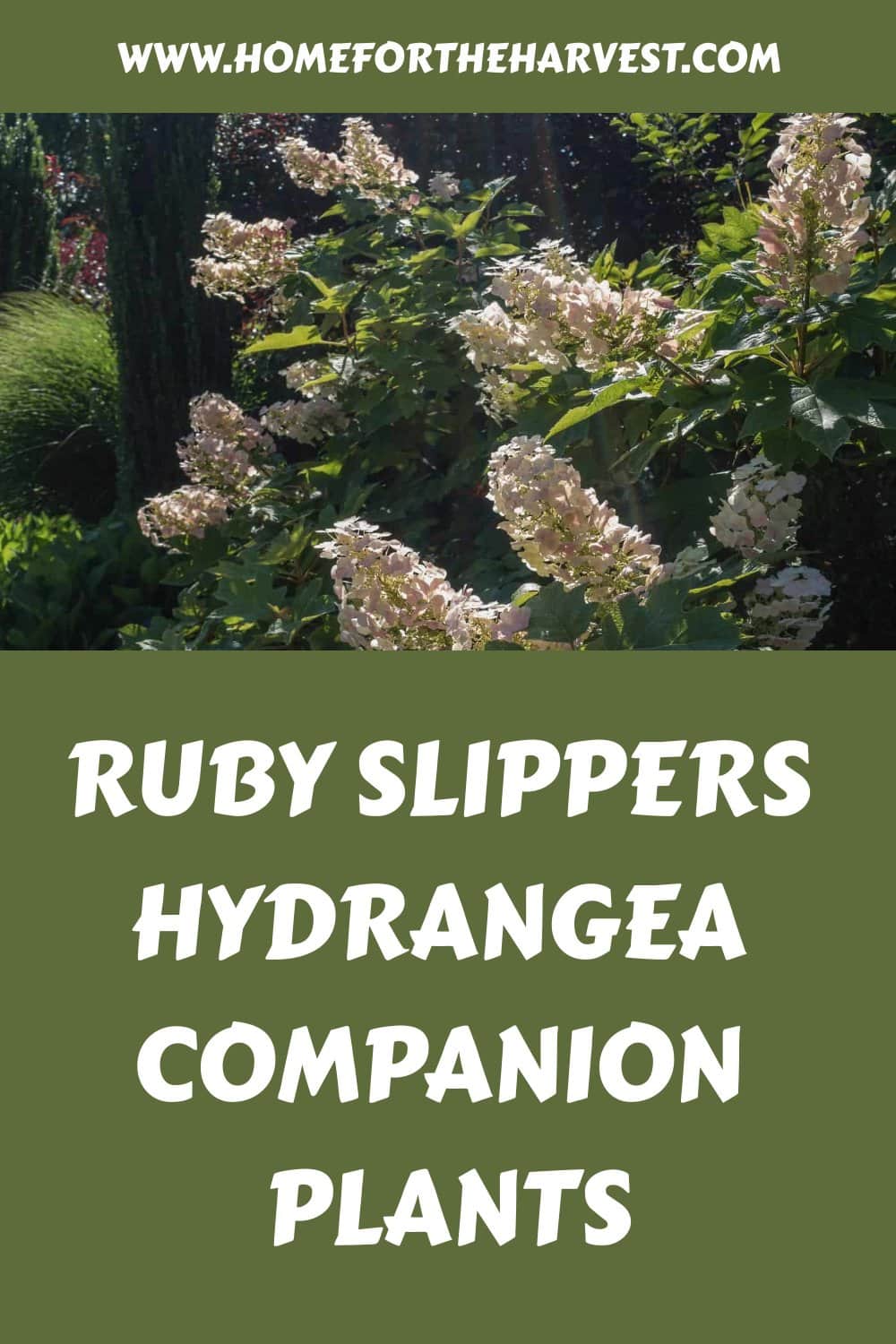While Ruby Slippers hydrangea is a stand-out in the garden all on its own, it truly shines when surrounded by complementary companion plants. From coral bells and coleus to hostas and daylilies, these plant pairings bring something special to your eye-catching outdoor display.
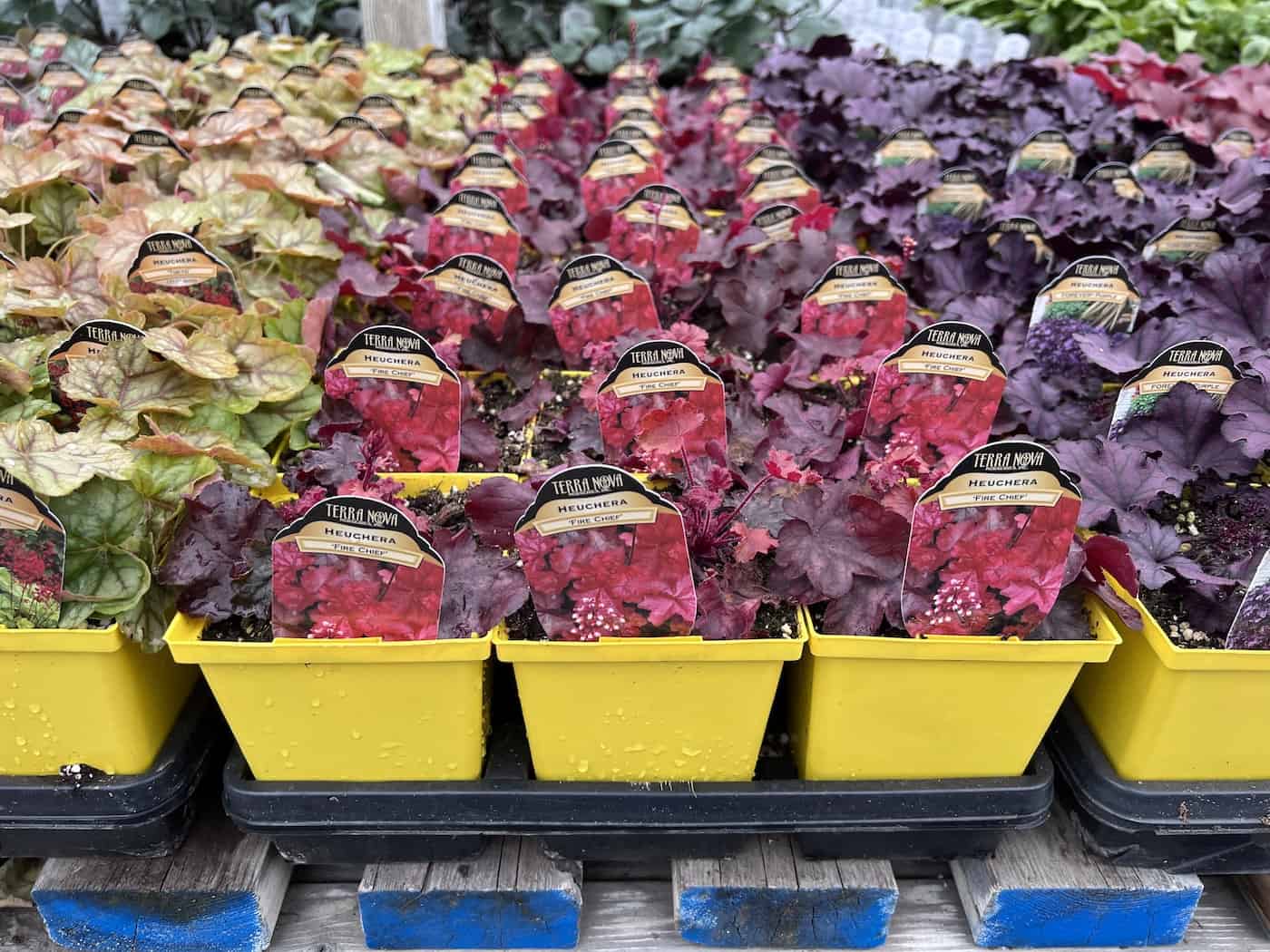
1. Coral bells
Coral bells (Heuchera) is a low-growing flowering perennial that adds beauty and color to any garden. Its vibrant foliage makes it an ideal choice for shady spots in the landscape. It grows best in well-drained soil and partial shade, making it easy to grow alongside Ruby Slippers hydrangea and to care for and maintain.
The leaves of coral bells come in a variety of colors, including purple, bronze, green, red, or yellow, with some varieties having variegated foliage. The flowers are small, but they add an extra touch of interest to the plant as they appear on tall stalks above the foliage from late spring through summer.
Coral bells can be used as ground cover plants or planted along walkways or around trees where their colorful foliage will stand out against other plants. They also look great for added texture and contrast when planted together in groups or mixed with other perennials, such as hostas and daylilies.
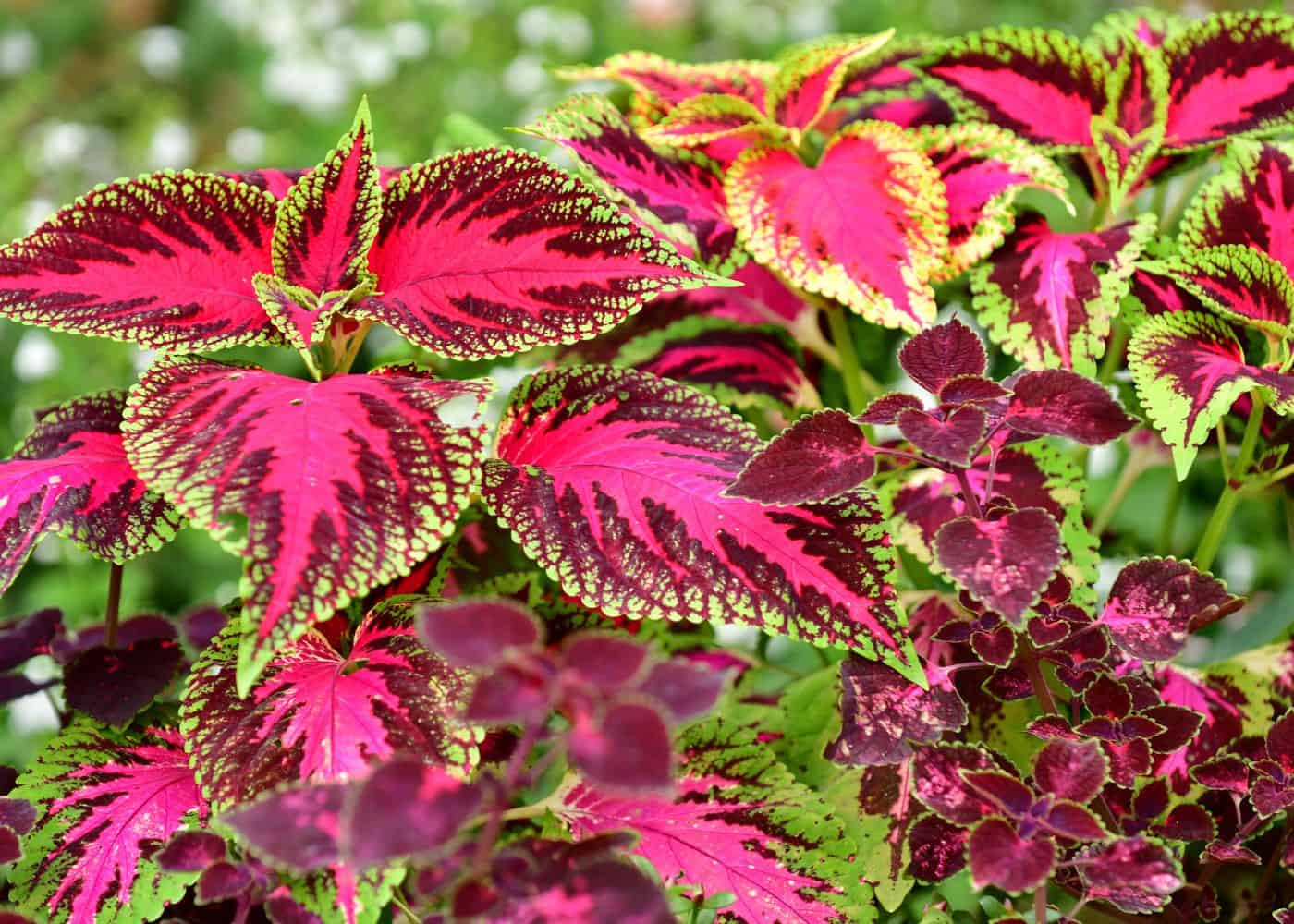
2. Coleus
Coleus is a beautiful foliage plant that adds texture and color to any garden. It’s an easy-to-care-for perennial with vibrant leaves in shades of green, red, purple, yellow, and orange. Hydrangea makes a great companion for coleus because it has similar needs when it comes to light and water requirements.
Coleus can be planted in the ground or grown in containers on your patio or deck. When planting coleus outdoors, make sure you choose a spot that gets partial shade throughout the day since too much sun will cause its leaves to fade quickly. If you’re growing them indoors, they prefer bright indirect sunlight near a window but away from direct heat sources like radiators or air conditioners.
When it comes to watering your Coleus plants, keep the soil moist but not soggy, as overwatering can lead to root rot, which can kill your plants quickly if left unchecked. Fertilize during the spring and summer months with a balanced fertilizer for best results.
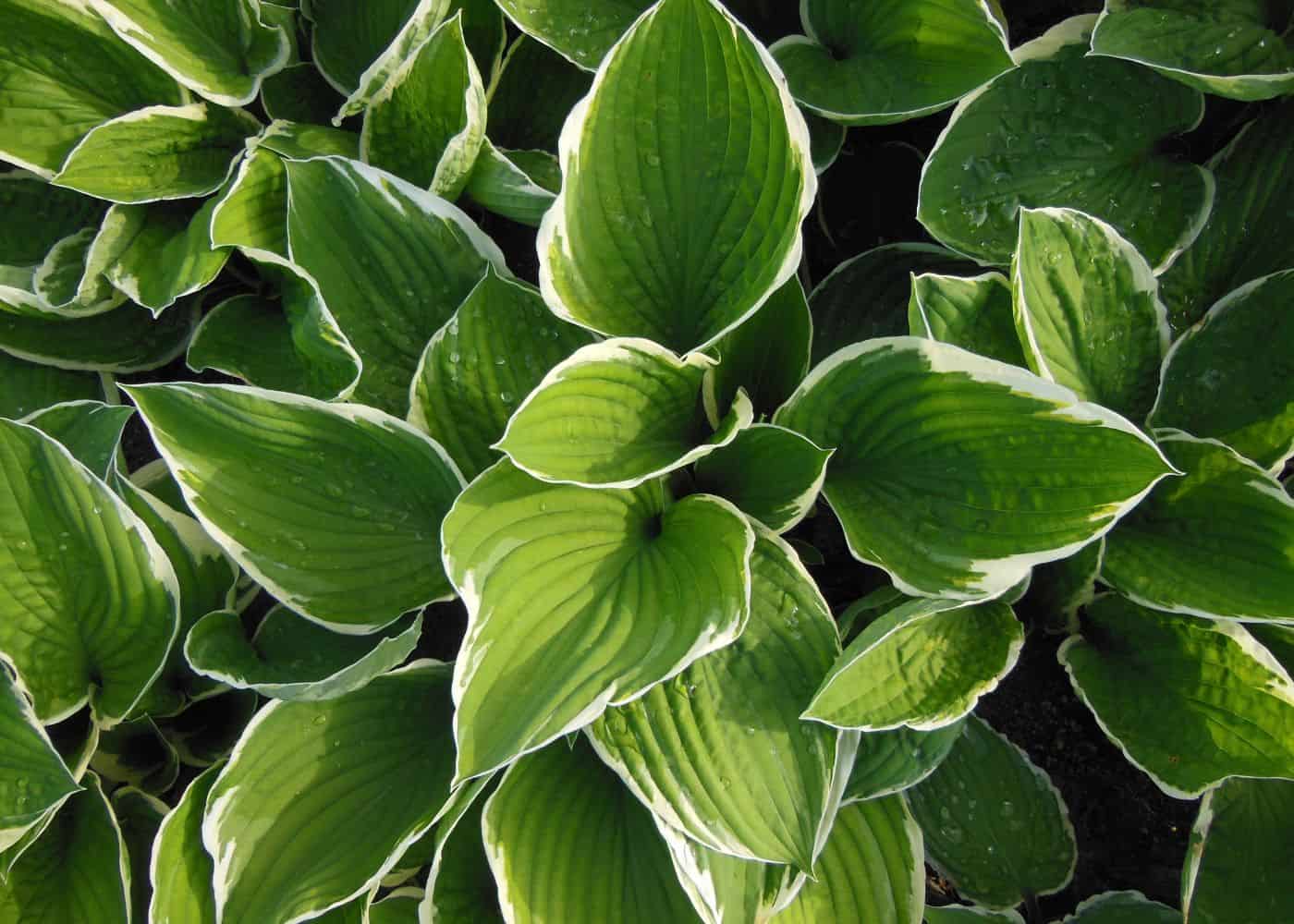
3. Hostas
Hostas are a beautiful and versatile perennial that can add color and texture to any garden. They come in many sizes, shapes, and colors, so there’s something for everyone! Hostas grow best in partial shade or dappled sunlight. When planted with Ruby Slippers hydrangea, they create an eye-catching combination of vibrant pink blooms set against the deep green foliage of hostas.
When planting hostas, it is important to remember that their roots need plenty of room to spread out, so be sure to give them enough space when you plant them. It is also important not to overcrowd your garden as this can cause disease or insect infestations that can damage your plants over time.
Hostas are very low maintenance once established but do require regular watering during dry spells if you want them to look their best throughout the season. If you’re looking for a way to add some color and texture without too much effort, then hostas are definitely worth considering! They make great additions along pathways or around trees where they will get just enough sun while still providing some relief from the heat on hot summer days.
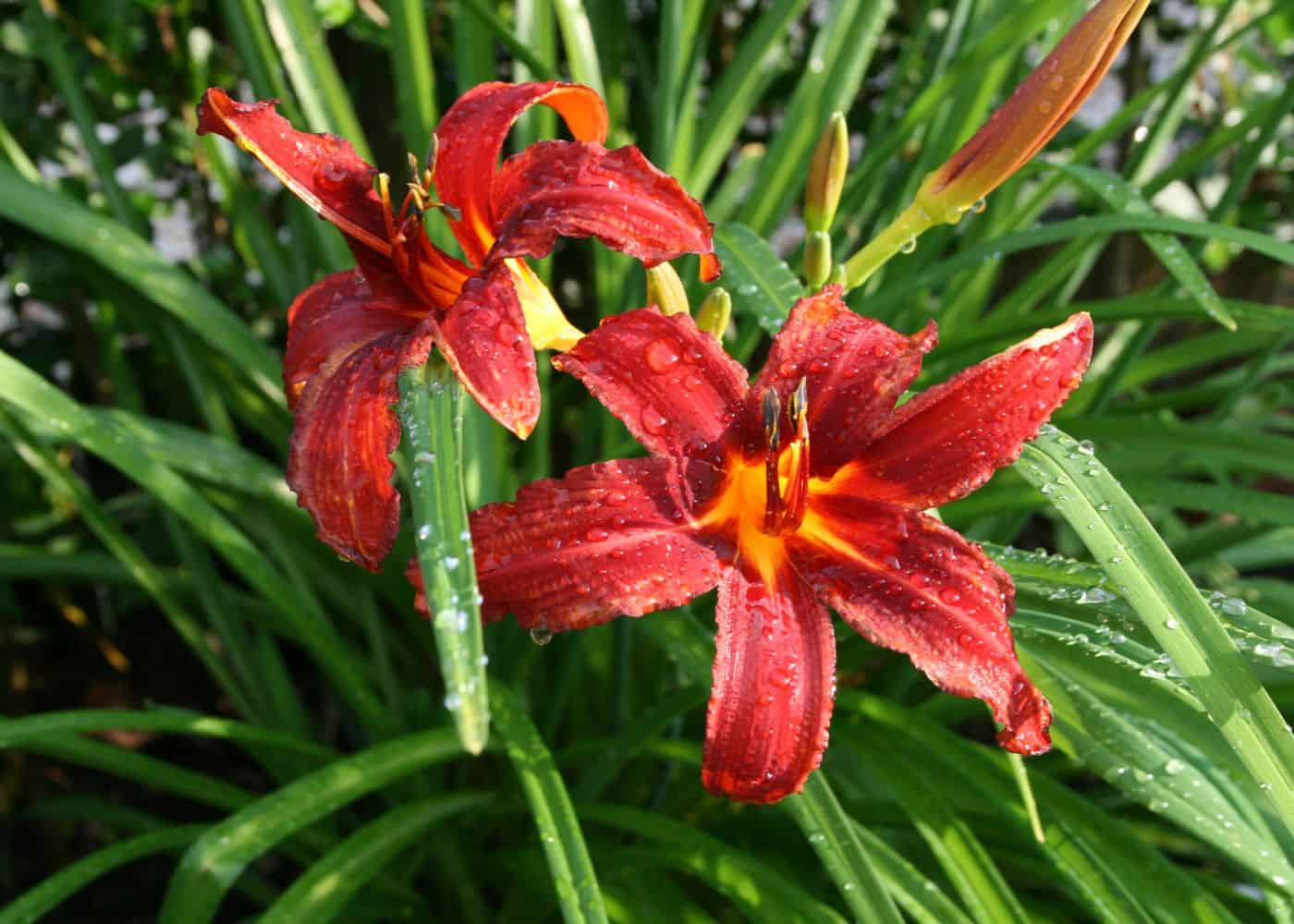
4. Daylilies
Daylilies are beautiful and easy-to-care-for perennial flowers that can bring color to your garden all summer long. They come in various colors, shapes, and sizes, so you’re sure to find one that will fit perfectly into your landscape design. Daylilies are also very low maintenance and require little care once planted.
When planting daylilies, it is important to choose the right location for them. They prefer full sun or partial shade and should be planted in well-drained soil with plenty of organic matter. Once planted, water them regularly until they become established, then only water them during periods of drought or extreme heat. Fertilize lightly every spring before new growth begins with an all-purpose fertilizer at the rate recommended on the package label for best results.
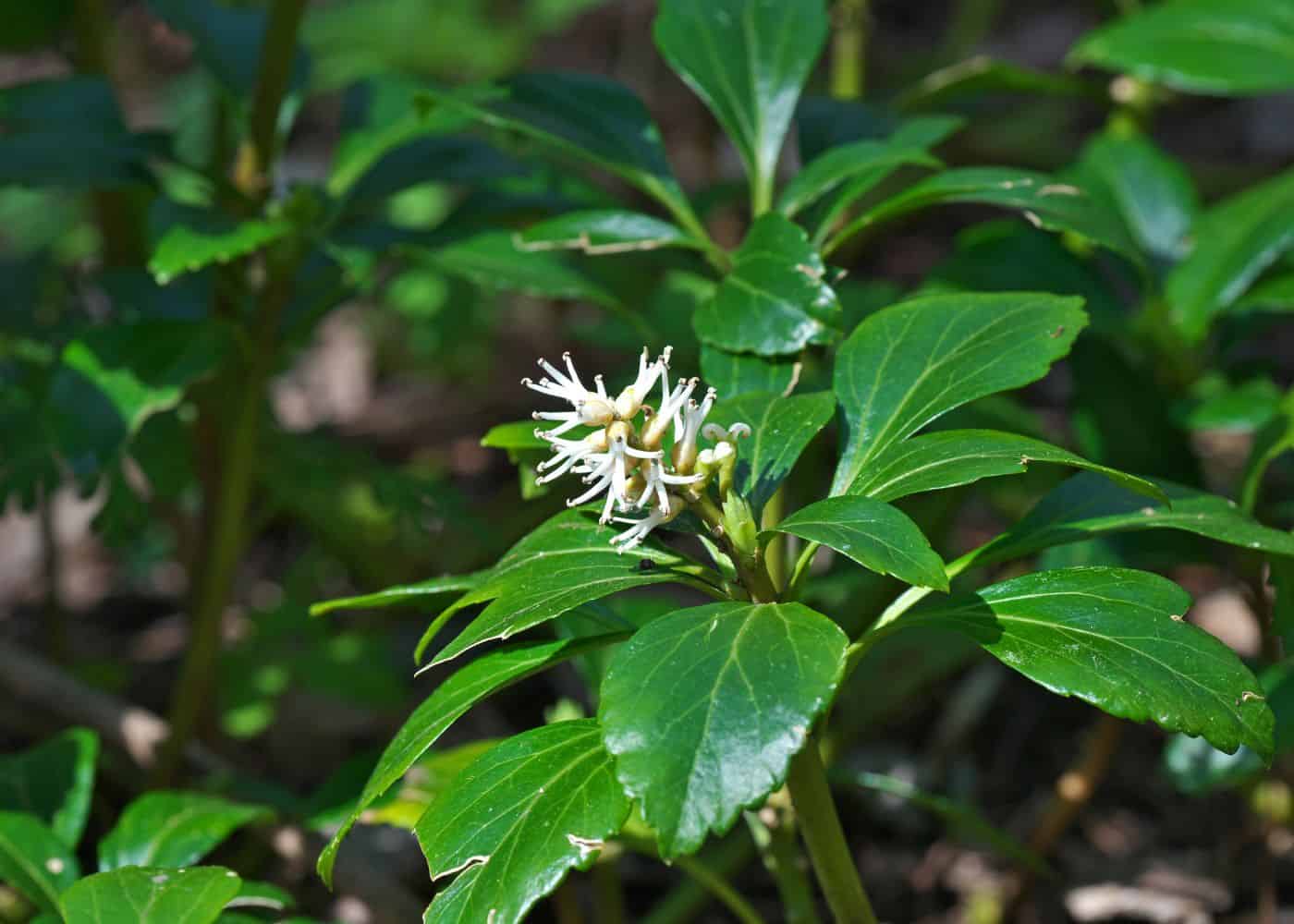
5. Pachysandra
Pachysandra is a low-maintenance groundcover that can add texture and color to your garden. It’s an evergreen perennial, meaning it will stay green all year round and provide a lush backdrop for other plants in the garden. The leaves are glossy and dark green, with white flowers blooming in late spring or early summer.
This plant grows best in partial shade but can tolerate full sun if given adequate water during dry periods. Pachysandra prefers moist soil, so be sure to water regularly when planting this ground cover. It’s also important to keep weeds away from pachysandra as they can compete for nutrients and moisture in the soil.
One of the great things about pachysandra is its ability to spread quickly over time, creating a dense mat of foliage that smothers out weeds while adding texture and interest to your landscape design. This makes it ideal for use around trees or shrubs where you don’t want grass growing too close by, such as around oakleaf hydrangeas which require more space than most other plants do!
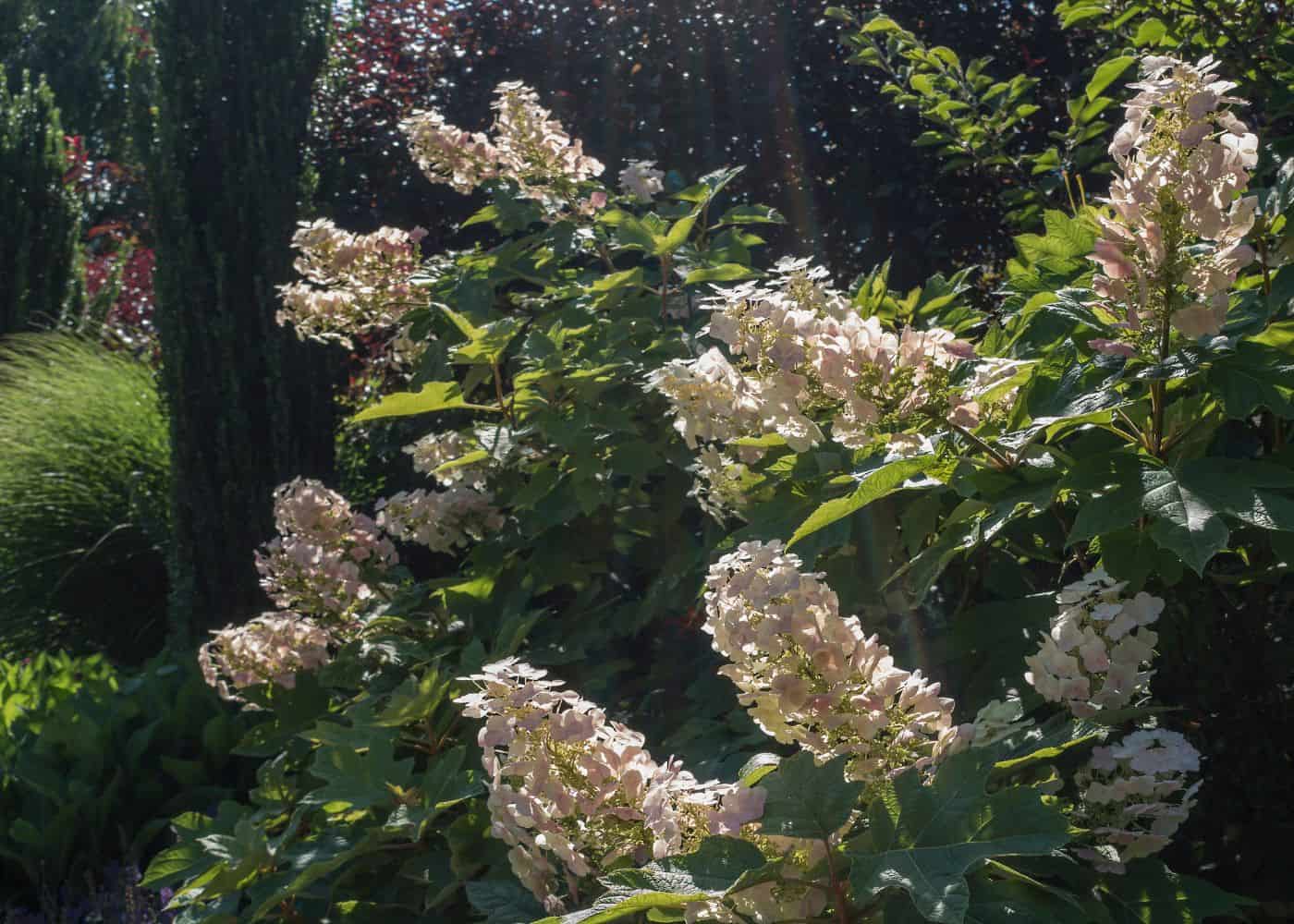
FAQs about Ruby Slippers hydrangea companion plants
What can I plant next to oakleaf hydrangeas?
Consider adding perennials like hosta or ferns for year-round interest and color. For seasonal blooms, try shade-tolerant perennials like daylilies, daisies, or black-eyed Susans.
If you’re looking for something with height and texture, consider ornamental grasses like muhly grass or fountain grass. Finally, add some evergreen shrubs, such as boxwood or holly, for structure and winter interest.
Will Ruby Slippers hydrangea grow in the shade?
Yes, Ruby Slippers Hydrangea can grow in the shade. It is a deciduous shrub that thrives in partial to full sun in cooler zones but will tolerate some shade as well. In warmer zones like 7-9, partial shade is preferable, especially during harsh afternoon sunlight.
The amount of sunlight the plant receives will affect its growth and blooming habits, with more sun leading to larger flowers and better foliage color. With enough water and proper care, this hydrangea variety can thrive even when planted in shady areas of your garden or landscape.
How big does Ruby Slippers oakleaf hydrangea get?
Ruby Slippers Oakleaf Hydrangea is a deciduous shrub that typically grows to be 3-5 feet tall and wide. It has large, showy white flowers in summer, which turn pink as they age. Its foliage turns deep purple in the fall for added interest. This hydrangea can tolerate full sun or partial shade but prefers moist soil with good drainage for best growth and flowering performance. With proper care, it can reach its maximum size of 5 feet tall and 6 feet wide within 4-6 years after planting.
What should I plant in front of an oakleaf hydrangea?
When deciding what to plant in front of an oakleaf hydrangea, consider both color and texture. A few good options include hostas for their lush foliage, ornamental grasses for a textural contrast, or daylilies with bright pops of color. For more subtle hues, try coral bells or ferns. Be sure to choose plants that can tolerate the same amount of sunlight as your hydrangea and are suitable for your climate zone. With careful selection you can create a stunning garden display that will be enjoyed all season long!


